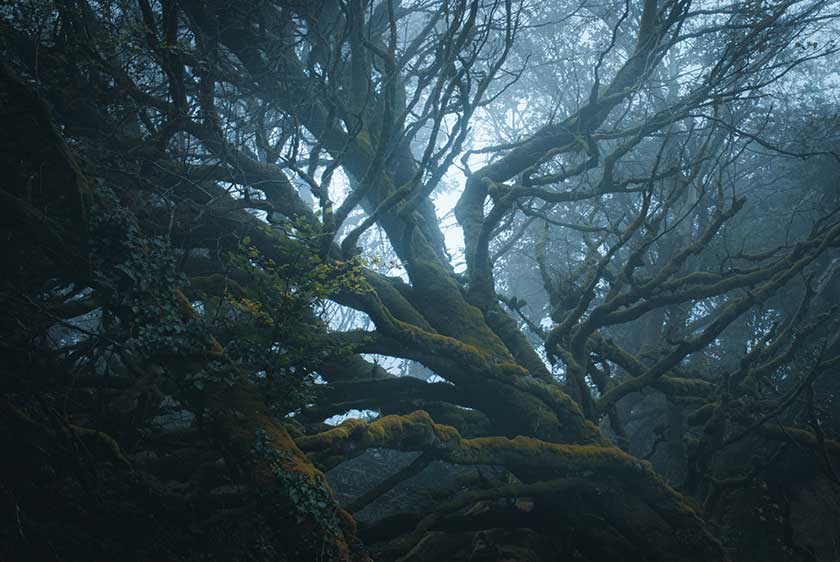Posted by Chieftain Trees ● Dec 22, 2020 4:56:21 PM
In this article we're going to take the confusion out of what rewilding is, the different terms used, why it's such a controversial topic, and often compared and contrasted with afforestation. Let's start at the start, what is rewilding?
What is rewilding?
Rewilding is an approach to environmental conservation that is about letting nature take control to heal itself and restore biodiversity through self-regulating ecosystems. Rewilding at it's most extreme aims to restore biodiversity and the landscape to exactly match what it would have been like after the ice age.
In simpler interpretations, rewilding is about allowing existing life to thrive on its own terms with minimal human intervention.
Ultimately the goal is to create conservation strategies to restore ecosystems and combat climate change, which in many cases requires the reintroduction of missing species of plants and animals to complete the chain. It's about giving mother nature the missing pieces of the puzzle to solve the problem herself.
Types of rewilding
One of the reasons rewilding is a controversial topic is because the idea of rewilding has evolved in several different directions since first being introduced in 1998, with each displaying its own potential benefits and drawbacks.
- Pleistocene rewilding aims to replicate ecosystems that would have been seen around the last ice age 12,000 years ago. At this time there was a mass extinction of very large animals known as megafauna. The theory behind Pleistocene rewilding is that this extinction has created an imbalance in ecosystems that has never been repaired.
- Passive rewilding aims to reduce human management of ecosystems, restoring cultivated land back to natural processes and allowing nature to thrive on its own. It's a management strategy based on the removal of human intervention and allowing nature to balance itself.
- Translocation rewilding is a management strategy based on human intervention. The focus is on the active reintroduction of recently occurring native species, in contrast to Pleistocene rewilding which is a focus on the distant past. Translocation rewilding focuses on the reintroduction or reinforcement of missing species from outside the ecosystem.
Is Rewilding a good idea?
When you take out the complicated terminology involved, rewilding is all about increasing the number of wild places in the world, the biodiversity found there, and combating climate change. This can only be a good thing in our eyes. We don't need to replicate the ice age to improve the world we live in now.
Why is Rewilding controversial?
One of the core principles of rewilding is allowing nature to take control. This doesn't always mean that nature will create the garden of Eden. A project in the Netherlands Oostvaarderplassen raised controversy and outrage when reintroduced animals starved to death.
This raises a lot of questions about how involved humans should be in the management of these projects and when we should intervene. At Chieftaintrees we see rewilding as a gradual handover process to nature that will need a degree of co-creation to allow the wild to thrive.
Rewilding has often been compared critically to 'Afforestation', which is the establishment of a forest or stand of trees in an area where there was no previous tree cover. In our opinion, any activity that reinforces or introduces variables to promote the biodiversity of native species can only be a good thing. Call it whatever you want.
How can I Rewild myself?
Whether you have a garden or field the principles remain the same. Introduce factors to let nature take over or just step away entirely. To help understand where you can make some changes or step away, let's have a look at the layers of a woodland.
1. Ground layer let leaves, rotting wood, moss, ivy, and fungi gather instead of removing them. This will make a home for insects such as beetles, woodlice, and centipedes as well as animals like hedgehogs.
2. Field layer Stop cutting and trimming and let everything grow. Stop using weedkillers and pesticides. Plants such as stinging nettles provide homes to lovely insects like butterflies, so let your weeds succeed to see more biodiversity. If you have trees, consider flowers that can thrive in the shade such as bluebells, wild garlic, or wood sorrel.
3. Shrub layer This layer contains shrubs such as Hazel, apple, holly, and hawthorn in Ireland. The shrub layer is the most important for biodiversity and provides both a safe home and food source for many forms of life.
4. Tree layer The top layer contains the tree species. If you have an urban garden it's unlikely you will be planting mighty oaks but there will always be species that can accommodate your space, soil, etc.
It's actually possible to make a small woodland based on these layers within 4 metres squared. If you are limited by space check out our guide on how to wild your garden for more detail or you can learn more about native Irish trees here. If you have a lot of land, consider doing an audit of the species present and how you might best influence biodiversity, is it through a hands-on reintroduction program, or is it best to step back altogether and let nature do her thing?
In summary
- Rewilding is about giving mother nature the missing pieces of the puzzle to solve the problem herself.
- Don't get lost in names and labels, if you can contribute to biodiversity through native species you're rewilding.
- It doesn't take huge spaces to contribute to biodiversity. Lots of urban sanctuaries add up.
Let us know in the comments what you're doing to rewild!
Topics: Rewilding
